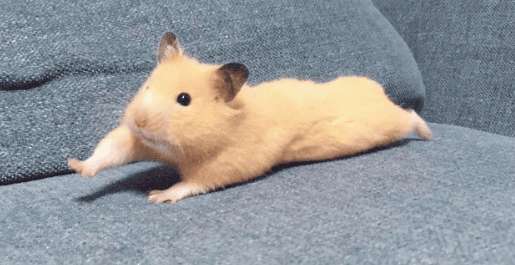Speaking of hamsters, if you have never raised them, you probably know how cute they are, small, exquisite, and hurried.
Concentrate on eating, eating, eating... ah! What to do?
You can exercise while lying down!
Hey...don't step on other people when exercising!
At first glance, it doesn’t look like a serious hamster...
But with so many colors, what are their names? Today we will talk about some common ones on the market.
The hamsters we raise all belong to the subfamily Hamsteridae of the class Mammalia, order Rodentidae, and subfamily Hamsteridae in taxonomy.

1
Common hamster varieties
Three-line hamster
Three-line, as the name suggests, the wild-colored three-line hamster has three obvious lines on its back, on the ears The hair and eyes are black. It has a docile temperament, is easy to train, and interacts well with people. It can be mixed with the same kind of hamsters, but it requires a process of getting the hamsters familiar with each other. It is recommended for novices to keep one hamster in one cage. It is the most common hamster species on the market and is suitable for beginners to raise.
Silver fox (also a third-line hamster)
A special breed of third-line hamsters with lighter coat color. Generally divided into silver foxes with wild color genes and silver foxes with purple warehouse genes. The difference is that the former has more obvious black stripes on its back, while the latter has less obvious stripes on its back, or even completely white. If silver foxes mate directly with silver foxes, the reproduction rate is extremely low. They can be crossed with puddings to obtain a certain number of silver foxes and puddings.
Pudding (still a third-line hamster)
They are both a special breed of third-line hamsters. The stripes on their backs are orange and their fur is the color of pudding. There are also those with milky white fur called white pudding.
Snowball (first-line hamster)
The eyes are red and he looks like a white mouse. The first-line ones have a more irritable personality and are difficult to raise, so they need to be paid special attention to.
The old man (Robolovsky hamster)
is the smallest dwarf hamster. The hair above the eyes and cheeks is white, making him look like an old man. The back is unstriped and brown, and the belly is white. It has a docile temperament. Although it is mixed with other individuals of the same kind, it is recommended for novices to have one rat in one cage. It's agile and small, so it doesn't fit in the palm of your hand. (It’s easy to fall off)
Golden Bear
Golden Bear is brown or golden in color and has tulip-shaped ears. Unlike the dwarf hamsters mentioned above, golden hamsters are larger and have hairless soles. The most special thing about it is that it can use the sac-like structures on both sides of the cheeks to store food (take it home and eat it slowly - -). The golden bear moves slowly and is of medium size. It can be held in the palm of your hand and played with. However, they have very bad tempers for the same kind, and they will not give up until they fight to the death (remember to keep them alone).

2
Feeding Precautions
About selecting hamsters
Take third-line hamsters as an example. There are two principles here. The first is to try to Choose a hamster with a pure bloodline. Generally speaking, crossbred hamsters have more distinctive colors, but compared to purebreds, crossbred hamsters are at a greater risk of developing diabetes. The second principle is to try to choose hamsters of the same generation when mixed breeding, so that the chance of successful mixed breeding will increase.
About the house
The house prepared for the hamster should be as big as possible, what? How big is as big as possible? Just the biggest you can afford. It should be filled with toys, water bottles, bathrooms, and bedrooms. Just spread some sawdust on the ground. Don't lay a wire mesh to avoid cutting the hamster's little feet. If there are many hamsters in your house, setting up more relatively open spaces and fewer closed rooms can effectively alleviate the situation of fighting among the little ones. Hamsters can run several kilometers a day in the wild, so remember to put a running wheel and other fitness facilities in the house so that they can grow healthily.
About food
Hamsters are omnivorous animals. They will eat fruits and vegetables, and they also like to eat bugs, but the best food is rat food. Rat food is not only easy to store but also provides all the nutrients your hamster needs. Of course, it’s okay to give the little guy some fruit occasionally. The way he looks at it holding the fruit and eating it is so cute, it makes my heart melt o(* ̄▽ ̄*)ブ. Cute is cute, but don’t overfeed it, as overfeeding will cause many digestive tract problems.

 扫一扫微信交流
扫一扫微信交流
发布评论